This afternoon I went for a drive in Banff National Park, following the Minnewanka Loop. This road is a circuit up to Lake Minnewanka, just north of the Town of Banff. I stopped at a number of locations to shoot some mountain scenes.
My first two pictures feature the picturesque Mount Inglismaldie. The first was taken near the south end of the lake, looking northward. The frozen lake is a popular area for recreation in winter, used by skaters, ice fishermen and walkers. If you look closely at the centre of the scene, you’ll observe some people enjoying a walk on the lake.
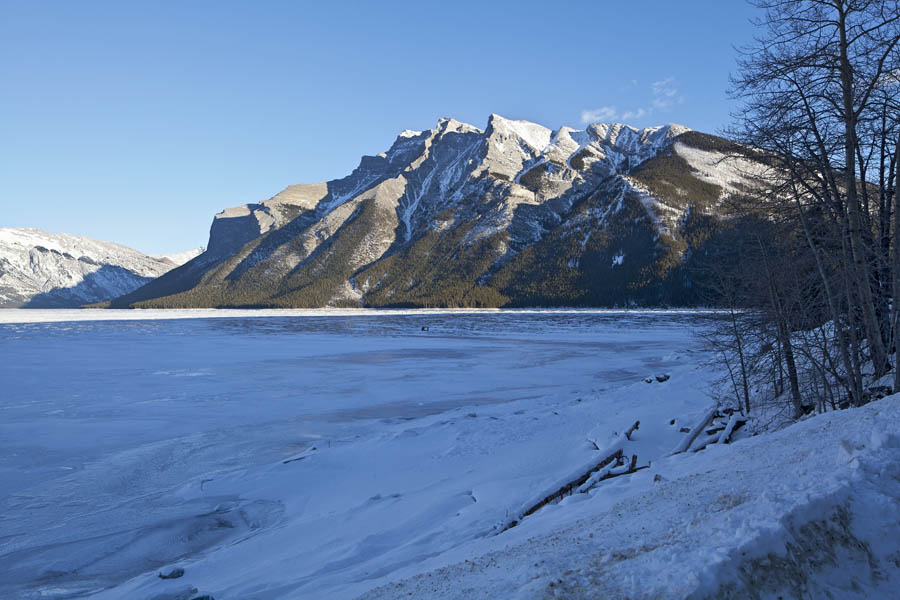
Further up the lake, I stopped at a lookout to the east of Mount Inglismaldie. I took this next picture looking across the lake’s outlet to the adjacent Two Jack Lake.
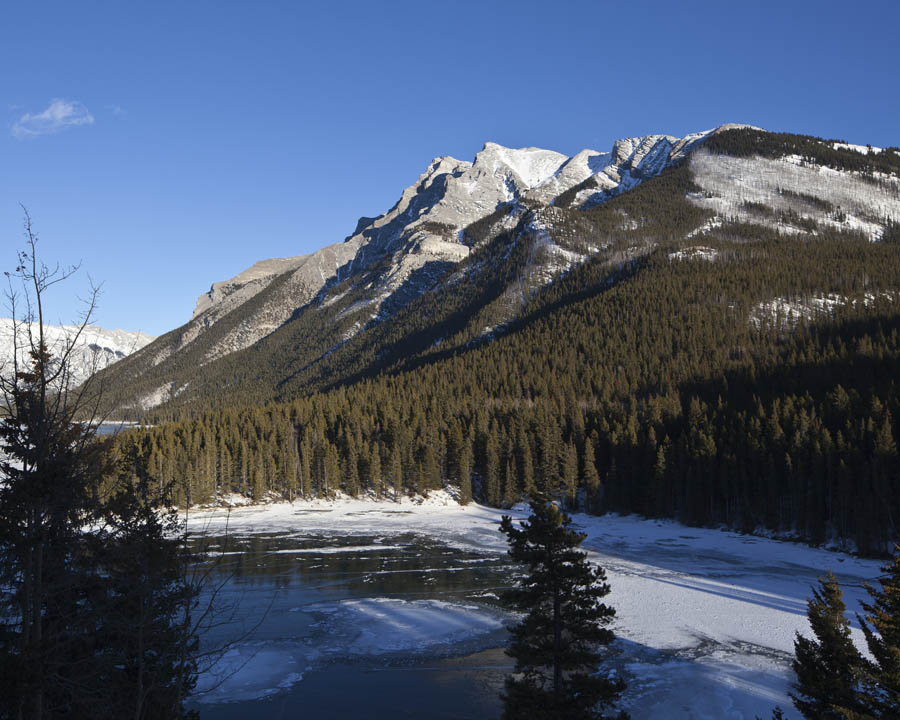
My next stop was on the road leading to Johnson Lake. I walked in from the road to get this picture of the Fairholme Range, a chain of mountains running eastward from Banff to Canmore. I noticed a lot of animal tracks in the snow but no animals present at the time I was there.
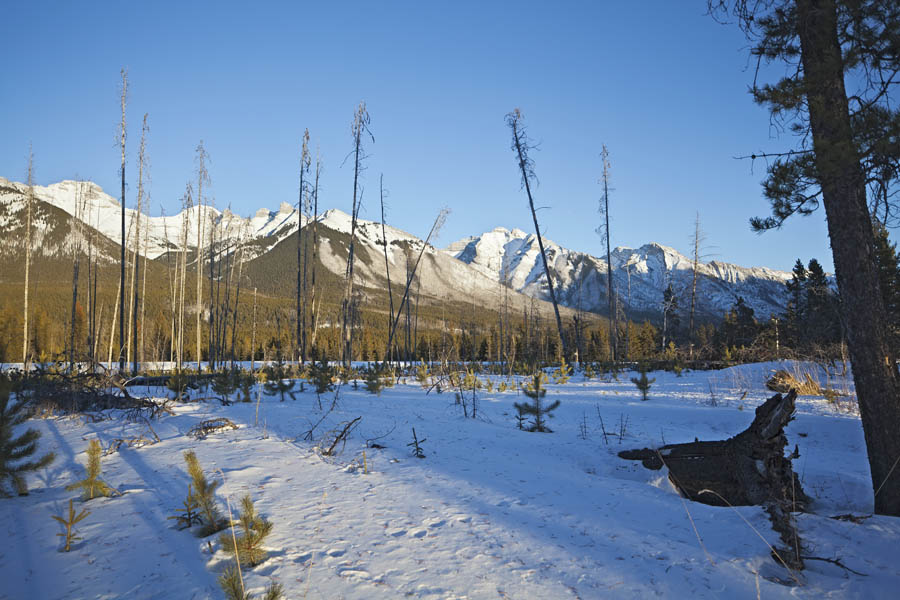
It is often a good idea to look in the opposite direction from where you’ve just photographed. I liked what I saw, a glimpse of Mount Rundle through the trees. The late afternoon sun provided great, warm light, casting long shadows across the scene.
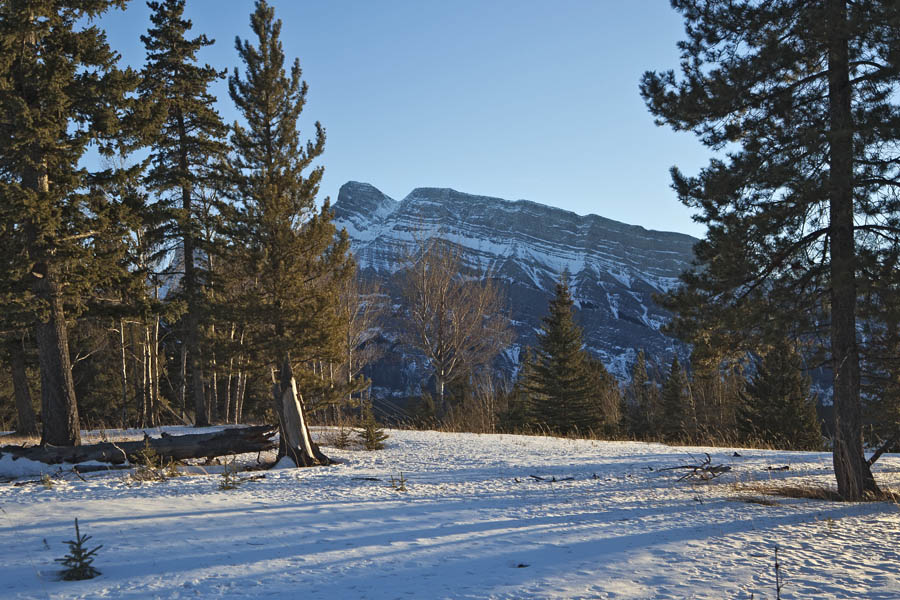
My last stop was just short of where the loop intersects the Trans Canada Highway, my route home. I was able to capture a new perspective on a peak I’ve photographed many times before, Cascade Mountain. I’ve photographed it from our back porch, 22 km (14 miles) away; today I took the shot from much closer. My last two exhibits for today feature Cascade Mountain from its base, at a distance of no more than 200 metres (220 yards). It’s very imposing from this vantage point, over 900 metres (3000 ft) straight up. Cascade Mountain is popular with rock climbers and ice climbers. The latter scale the frozen waterfall you see bisecting the scene.
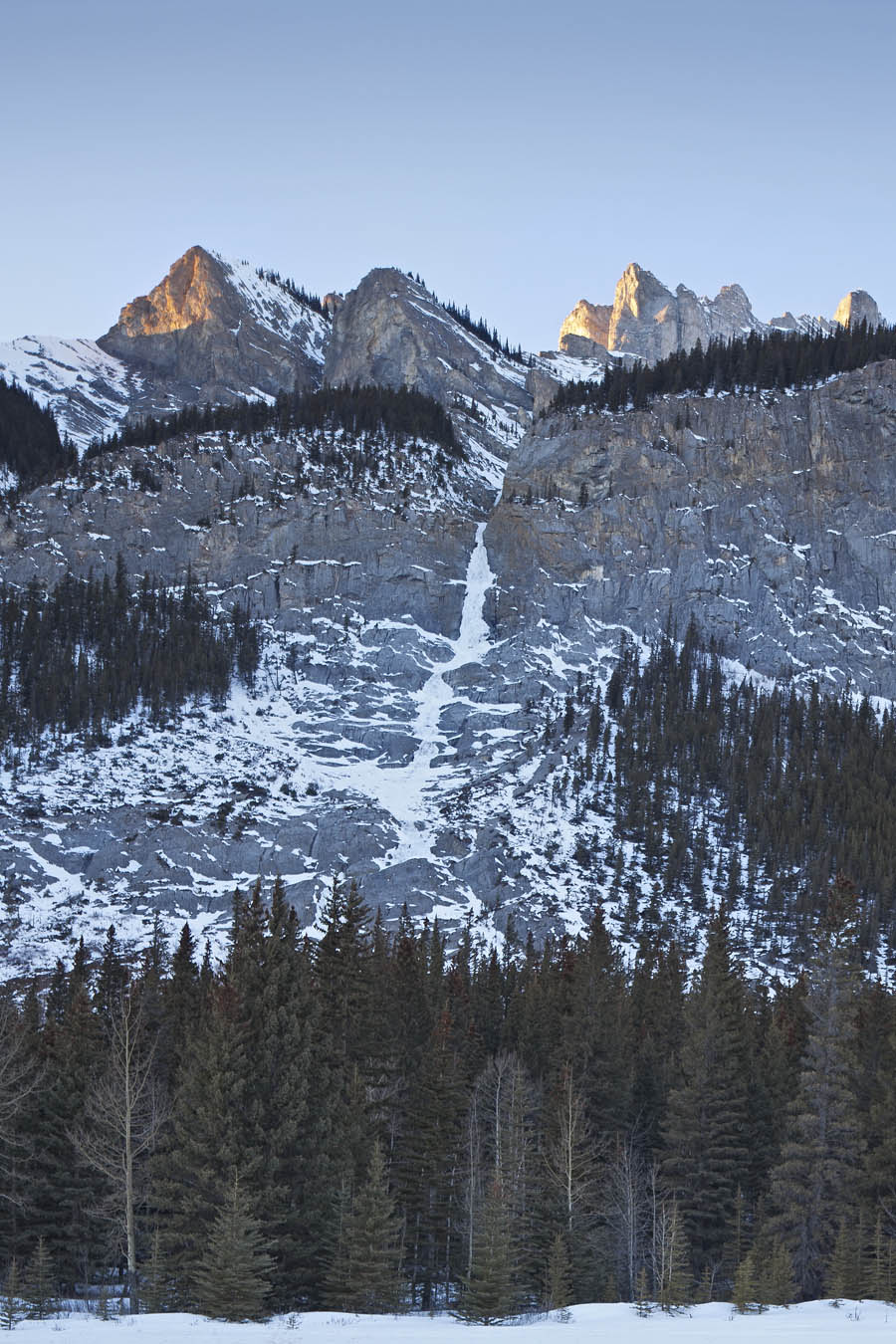
A last look at Cascade Mountain, a slightly different perspective. By now, you’ve probably guessed that the mountain is named for the waterfall you see in the middle of the scene.
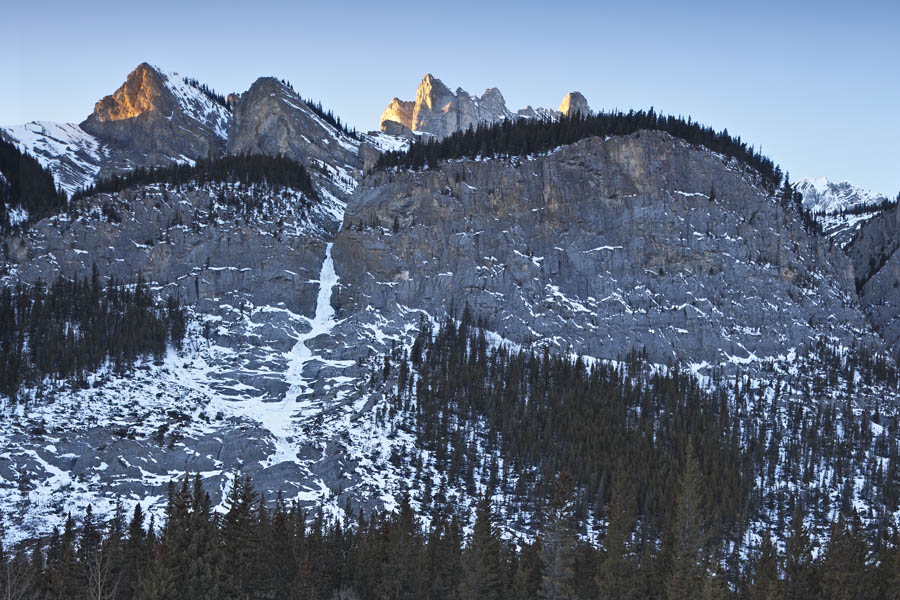
All of today’s pictures were taken using my 24 mm tilt-shift lens. It’s a great wide angle lens for capturing the expansive landscapes you see in today’s blog. It also worked very well for the close-ups of Cascade Mountain. The wide angle was sufficient to take it all in and the “shift” function enabled me to capture its full height, without tilting the camera upward. Keeping the camera lens parallel to the ground eliminates distortion prevalent with wide angle lenses shooting upward. I used the “tilt” function for all the pictures, expanding the depth-of-field for sharp focus through the entire depth of the scenes.
